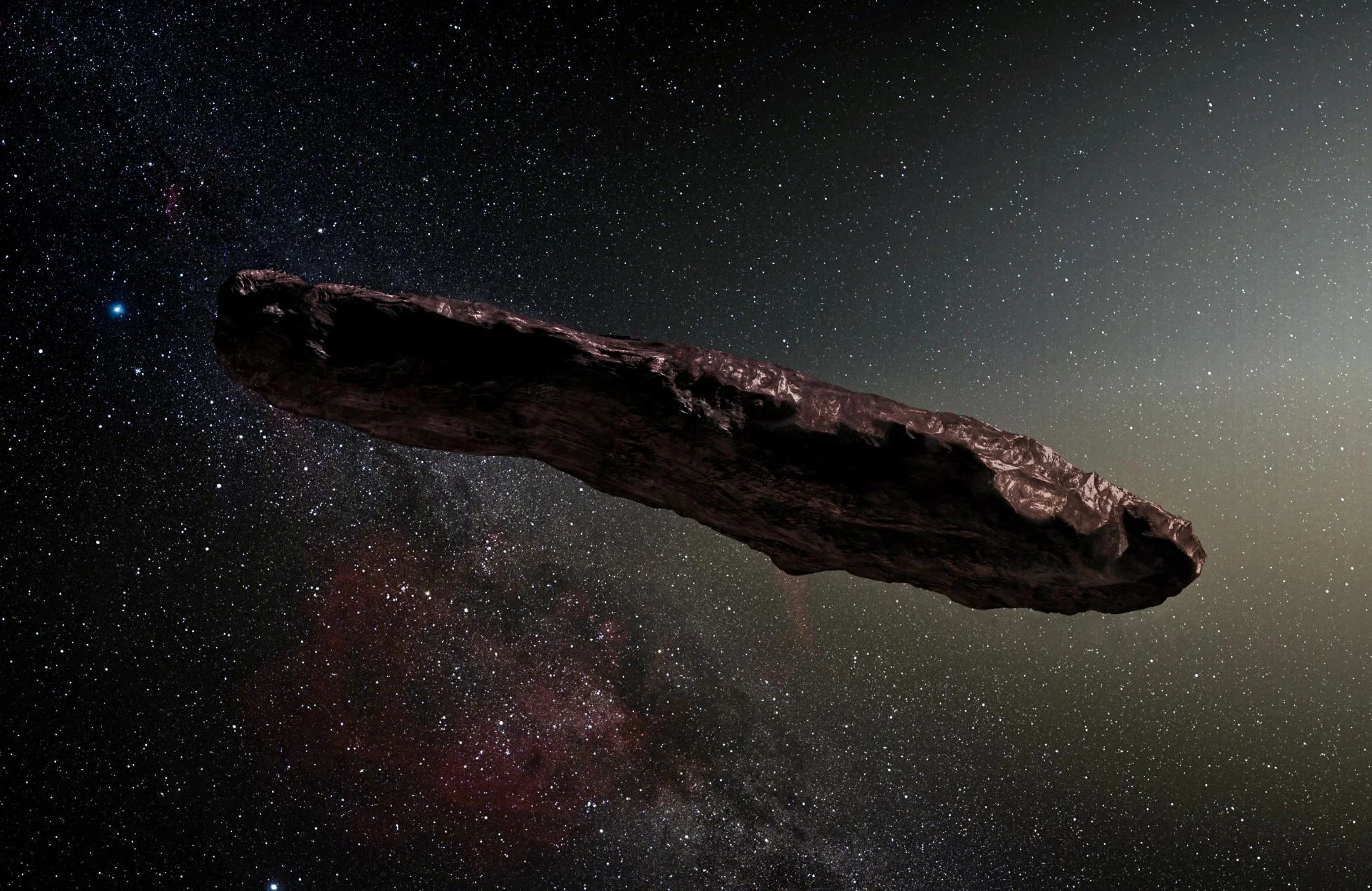An artist's impression of ʻOumuamua, the first known interstellar object to pass through our Solar System - Image Credit: Original: ESO/M. Kornmesser, Derivative: nagualdesign via Wikimedia Commons - HDR tune by Universal-Sci
Researchers weren't surprised that Oumuamua and the recently discovered interstellar comet 2l/Borisov (discovered only a few weeks ago) reached our solar system. In fact, they expect this to be the start of a very long list of interstellar guests.
Oumuamua was the first object from outside our solar system ever detected passing by. It was discovered with the STARRS1-telescope, located on a Hawaiin mountain. Fittingly it was given the Hawaiian name, 'Oumuamua, meaning 'scout.'
As the first known object of its kind, ʻOumuamua formed an unusual case for the International Astronomical Union, which assigns designations for astronomical objects. It was initially designated as a comet but later reclassified as an asteroid, mainly because it lacks a coma.
Trajectory of ʻOumuamua through our Solar System - Image Credit: nagualdesign; Tomruen via Wikimedia Commons
More recently, another interstellar object (2l/Borisov) was spotted drifting through our solar system. This time it was discovered by an amateur astronomer named Gennady Borisov. Contrary to 'Oumuamua, 2l/Borisov does have a pronounced coma. It is therefore categorized as the first interstellar comet. Other than the fact that it is larger than 'Oumuamua and that it has a noticeable coma we don't know much about 2l/Borisov yet, although astronomers expect to learn a lot more. While 'Oumuamua only was around for a few weeks, it is likely that scientists will be able to study 2l/Borisov for at least a year.
For most astronomers, the question remains: where did these mysterious objects originate from? An obvious explanation could be that the interstellar objects are planetesimals (building blocks from exoplanets that got ejected from their star system). But after researching approximately 4000 exoplanets, scientists came to the conclusion that most of them are positioned too close to their host star for ejection.
So where did these objects come from? Gregory Laughlin and Melena Rice from the Yale Department of Astronomy theorized that they could be material ejected from massive, newborn planets, orbiting much farther away from their host star. Those types of exoplanets could have carved out pronounced gaps in their protoplanetary disks.
An image of a protoplanetary disk. - Image Credits: ALMA (ESO/NAOJ/NRAO), S. Andrews et al.; NRAO/AUI/NSF, S. Dagnello
Protoplanetary disks are hectic environments where gas and dust are heated up by the still very young star. Together with the stars gravitational energy, this leads to movement and collisions, eventually building exoplanets. According to Laughlin and Rice, the most distant planets in the outer parts of the newly forming star system can fling out material that is able to leave the system entirely. The problem is that these types of exoplanets are much harder to detect than exoplanets that have orbits closer to their host star. This explainins why, as of yet, not a lot of these types of planets have been found.
The researchers' idea that there are actually a lot of exoplanets orbiting further out their star systems had to be tested. In order to do so, they looked at twenty nearby protoplanetary disks photographed by the Atacama Large Millimeter Array. If a protoplanetary disk has apparent gaps, it is possible to theorize what type of planet created them. Consequently, the systems can be recreated in a simulation allowing scientists to calculate how much material would have been ejected over time.
These simulations showed the researchers that we can expect to find hundreds of these types of objects after upcoming dedicated surveys come online. Studying interstellar objects that are visiting our solar allows scientists to learn more about different parts of our galaxy. Instead of interpreting data gathered from enormous distances, astronomers get an unprecedented chance to study objects from up close. Rice stated that they're not looking at a distant object but at actual material that makes up planets in other solar systems.
The researchers expect that the amount of data in this field is going to explode in the near future. We can't wait for more of these objects to be found and the potential discoveries about alien solar systems that might follow.
Sources and further reading: Hidden Planets: Implications from 'Oumuamua and DSHARP / Yale news release
If you enjoy our selection of content please consider following Universal-Sci on social media:












